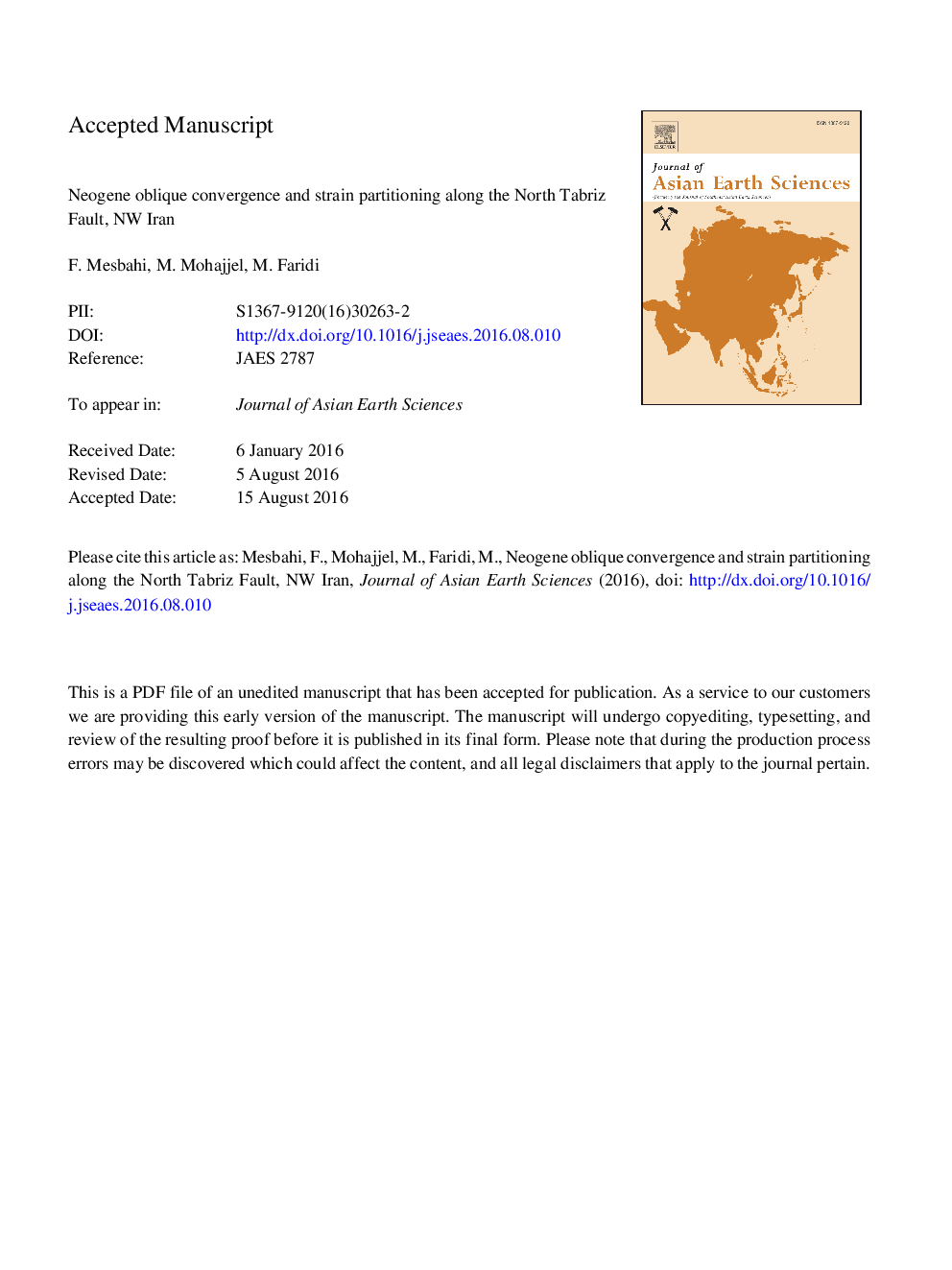| Article ID | Journal | Published Year | Pages | File Type |
|---|---|---|---|---|
| 8914315 | Journal of Asian Earth Sciences | 2016 | 51 Pages |
Abstract
The North Tabriz Fault is one of the main active geological structures in NW Iran. It is reactivated under a pure-shear dominated transpressional tectonic regime induced by high angle (â¼50°) oblique convergence between the Arabia and Eurasia plates. The first stage structures in the study area are folds and thrust faults that are mostly observed in Miocene sedimentary rocks and are cut by right-lateral strike-slip faults that are part of the North Tabriz Fault. Structural analysis of the North Tabriz Fault revealed flower structure geometry with thrust faults and related folds on both sides of the fault and strain partitioning. From GPS data, 7.3 mm/year of right lateral plate motion has been calculated for NW Iran with 57-72% strike-slip partitioning, resulting in a maximum right-lateral slip rate for the North Tabriz Fault of 4.2-5.3 mm/year. Since the total strike-slip displacement along the NTF has been estimated at 17 ± 3 km, with the slip-rate of 4.2-5.3 mm/year, the maximum age of inception of the NTF strike-slip movement was at 3.2-4 Ma (Upper Pliocene).
Related Topics
Physical Sciences and Engineering
Earth and Planetary Sciences
Geology
Authors
F. Mesbahi, M. Mohajjel, M. Faridi,
